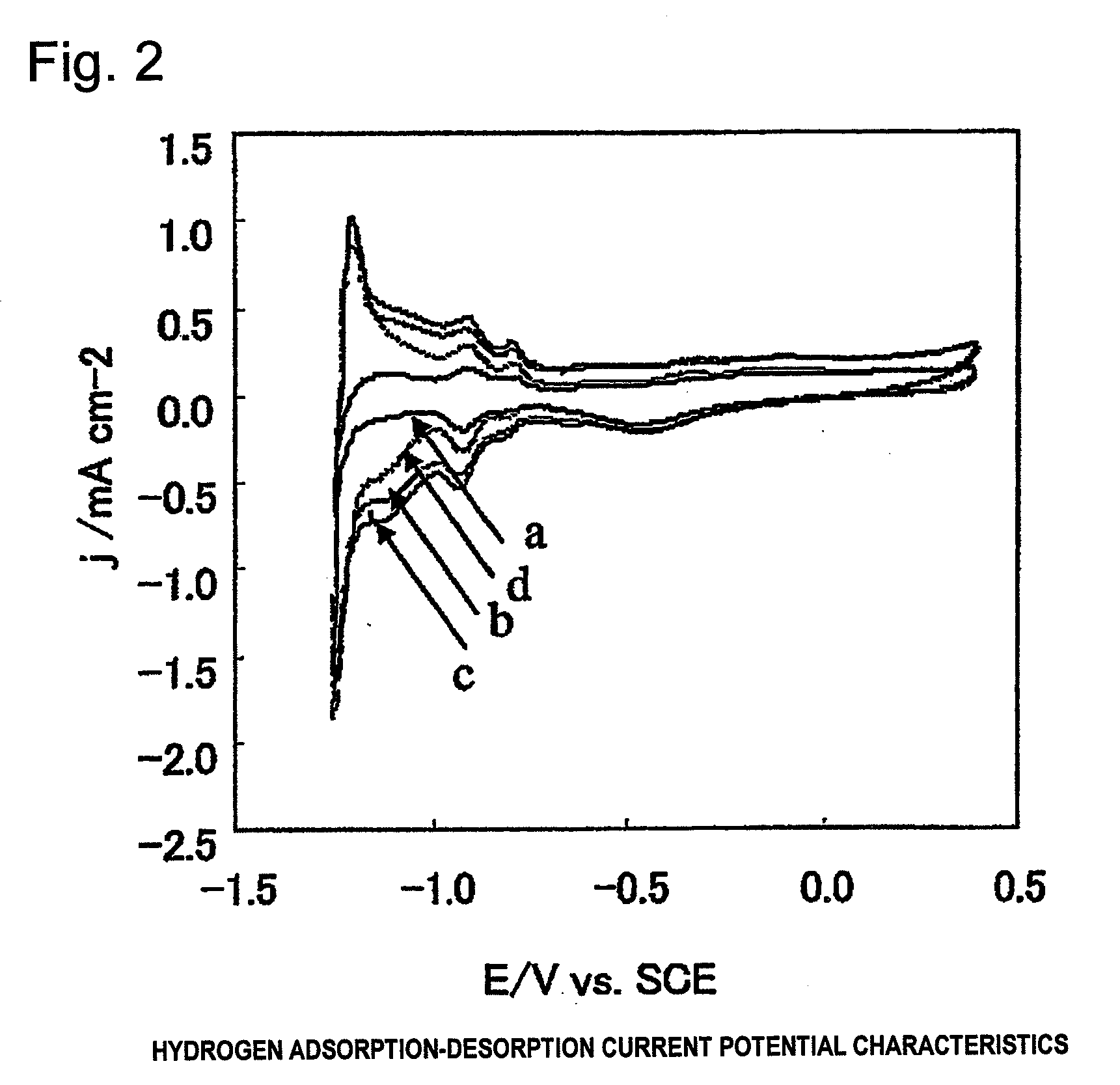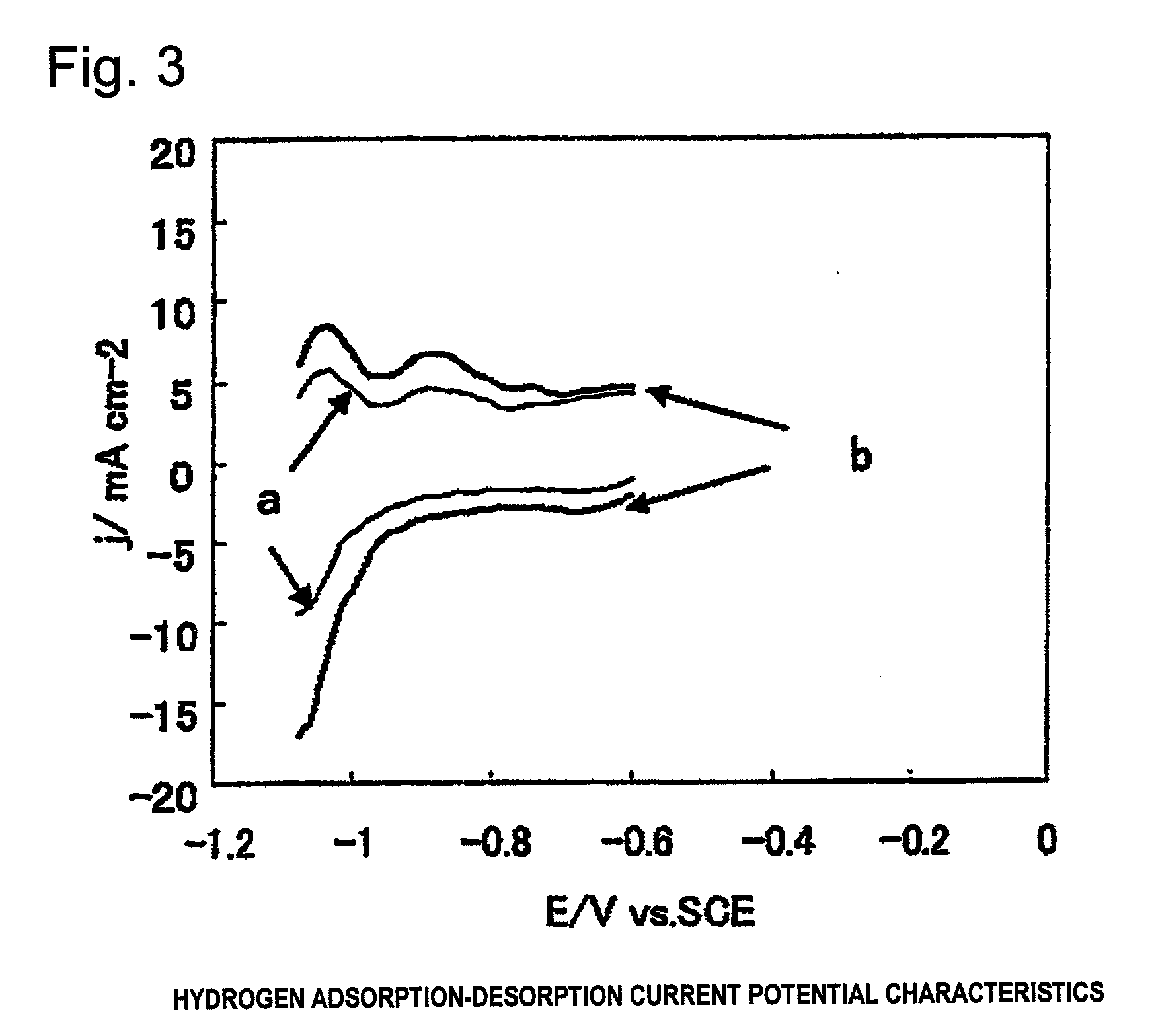Electrode for generation of hydrogen
- Summary
- Abstract
- Description
- Claims
- Application Information
AI Technical Summary
Benefits of technology
Problems solved by technology
Method used
Image
Examples
reference examples 1
[0086]K2Ta2F7 was added to a molten salt of LiF—NaF (60:40 by mol %), and maintained at 800° C. under an Ar atmosphere in an electric furnace. Current was allowed to flow at a current density of 8 A / dm2 for 10 minutes, thereby forming a Ta layer on a platinum plate immersed in this molten salt. This was burnt at 600° C. in the air to obtain an oxide. Ta oxide partially dropped off to cause base platinum to be exposed. The formation of Ta2O5 was confirmed by XRD.
example 1
[0088]As a cathode substrate, there was used a platinum plate (width: 2 cm, height: 3 cm) the surface of which was sufficiently roughened with alumina particles (No. 60) and etched with 20 wt % boiled hydrochloric acid.
[0089]The nickel plate was immersed in a 2% aqueous solution of hydrochloric acid containing chloroplatinic acid, and taken out after 5 minutes. After drying at 60° C., this was burnt at 500° C. for 10 minutes in an electric furnace. This process was repeatedly conducted three times to prepare a catalytic layer with a Pt film having a final total catalyst amount of 3 g / m2.
[0090]A solution in which 5 wt % of tantalum chloride was dissolved was prepared. A mesh on which the above-mentioned catalytic layer was formed was immersed therein, and slowly pulled up. After drying at 60° C., this was burnt at 500° C. for 10 minutes in an electric furnace. This process was repeatedly conducted twice to prepare a cathode for generation of hydrogen with a hydrogen adsorption layer ...
example 2
[0091]A Pt electrode (a mesh on which a catalyst was formed) was prepared in the same manner as in Example 1. A solution in which 5 wt % of titanium chloride was dissolved was prepared. The above-mentioned Pt electrode was immersed therein, and slowly pulled up. After drying at 60° C., this was burnt at 500° C. for 10 minutes in an electric furnace. This process was repeatedly conducted twice to prepare a cathode for generation of hydrogen with a hydrogen adsorption layer having a final TiO2 catalyst amount of 0.3 g / m2.
PUM
| Property | Measurement | Unit |
|---|---|---|
| Electrical conductor | aaaaa | aaaaa |
Abstract
Description
Claims
Application Information
 Login to View More
Login to View More - R&D
- Intellectual Property
- Life Sciences
- Materials
- Tech Scout
- Unparalleled Data Quality
- Higher Quality Content
- 60% Fewer Hallucinations
Browse by: Latest US Patents, China's latest patents, Technical Efficacy Thesaurus, Application Domain, Technology Topic, Popular Technical Reports.
© 2025 PatSnap. All rights reserved.Legal|Privacy policy|Modern Slavery Act Transparency Statement|Sitemap|About US| Contact US: help@patsnap.com



